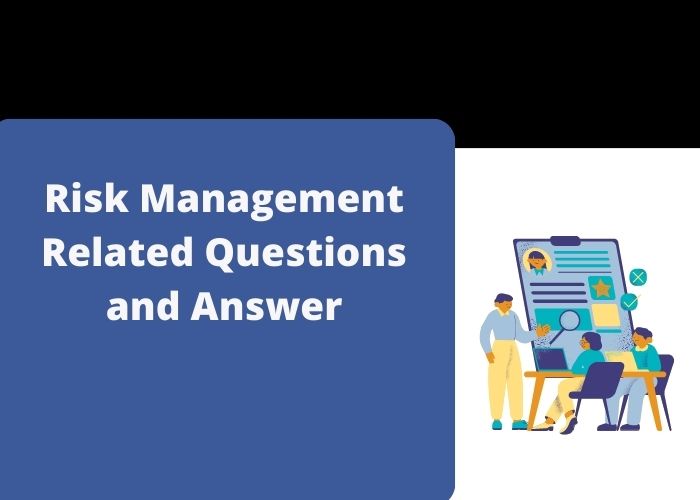1. What is risk management in startups?
Answer: Risk management in startups is the practice of identifying, assessing, and controlling risks that may arise in the course of running a business. This includes risks associated with financial, operational, legal, and other aspects of the business.
2. What areas should be considered when assessing risk in a startup?
Answer: Areas that should be considered when assessing risk in a startup include financial, operational, legal, market, regulatory, and reputational risks.
3. What strategies can be used to manage risk in a startup?
Answer: Strategies for managing risk in a startup include creating a risk management plan, implementing risk management processes, monitoring risk levels, and responding appropriately to risks.
4. How can startups identify risks?
Answer: Startups can identify risks by conducting a risk assessment, analyzing potential threats and opportunities, and consulting with experts in relevant fields.
5. What is the difference between risk management and risk mitigation?
Answer: Risk management is the practice of identifying, assessing, and controlling risks that may arise in the course of running a business. Risk mitigation is the process of implementing strategies to reduce the impact of risks that have been identified.
6. How can startups minimize risk?
Answer: Startups can minimize risk by creating a risk management plan, identifying potential threats and opportunities, implementing risk management processes, monitoring risk levels, and responding appropriately to risks.
7. What is the purpose of a risk management plan?
Answer: The purpose of a risk management plan is to provide guidance on how to identify, assess, and control risks throughout the life cycle of a startup.
8. What is the difference between risk and uncertainty?
Answer: Risk is the potential for a negative outcome to occur as a result of a decision or action. Uncertainty is the lack of knowledge or understanding of potential outcomes due to incomplete information.
9. What are the benefits of risk management in startups?
Answer: The benefits of risk management in startups include reduced financial losses, improved decision-making, better control over operations, improved customer service, and improved compliance with regulations.
10. What are the most common types of risk in startups?
Answer: The most common types of risks in startups include financial, operational, legal, market, regulatory, and reputational risks.
11. What are the steps involved in risk management?
Answer: The steps involved in risk management include risk identification, risk assessment, risk control, and risk monitoring.
12. What is the difference between proactive and reactive risk management?
Answer: Proactive risk management involves anticipating and preparing for potential risks before they occur. Reactive risk management involves responding to risks after they have occurred.
13. How can startups identify potential risks?
Answer: Startups can identify potential risks by conducting a risk assessment, analyzing potential threats and opportunities, and consulting with experts in relevant fields.
14. How can startups assess the impact of a risk?
Answer: Startups can assess the impact of a risk by considering the potential financial, operational, legal, market, regulatory, and reputational consequences of the risk.
15. How can startups control risks?
Answer: Startups can control risks by implementing risk management processes, monitoring risk levels, and responding appropriately to risks.
16. How can startups monitor risk levels?
Answer: Startups can monitor risk levels by conducting regular risk assessments, analyzing trends in risk levels, and responding appropriately to changes in risk levels.
17. How can startups respond to risks?
Answer: Startups can respond to risks by implementing risk management processes, monitoring risk levels, and responding appropriately to changes in risk levels.
18. What are the advantages of using a risk management plan?
Answer: The advantages of using a risk management plan include providing guidance on how to identify, assess, and control risks, reducing financial losses, improving decision-making, and improving compliance with regulations.
19. What are the components of a risk management plan?
Answer: The components of a risk management plan include risk identification, risk assessment, risk control, and risk monitoring.
20. What is the difference between quantitative and qualitative risk assessment?
Answer: Quantitative risk assessment involves the use of numerical data to analyze the likelihood and impact of a risk. Qualitative risk assessment involves the use of subjective data to analyze the likelihood and impact of a risk.
21. What are the benefits of using risk software?
Answer: The benefits of using risk software include improved accuracy, increased efficiency, and better control over operations.
22. What is the role of risk management in startups?
Answer: The role of risk management in startups is to identify, assess, and control risks that may arise in the course of running a business. This includes risks associated with financial, operational, legal, and other aspects of the business.
23. What are the potential consequences of failing to manage risk in a startup?
Answer: Potential consequences of failing to manage risk in a startup include financial losses, operational disruption, legal liabilities, and reputational damage.
24. How can startups use risk management to improve decision-making?
Answer: Startups can use risk management to improve decision-making by evaluating possible outcomes, considering potential risks, and assessing the impact of decisions.
25. How can startups ensure compliance with regulations?
Answer: Startups can ensure compliance with regulations by creating a risk management plan, monitoring risk levels, and responding appropriately to risks.
26. What role do leadership and governance play in risk management?
Answer: Leadership and governance play an important role in risk management by setting the tone for risk management, providing oversight and guidance, and ensuring compliance with regulations.
27. How can startups use risk management to improve customer service?
Answer: Startups can use risk management to improve customer service by identifying potential risks to customer satisfaction, implementing strategies to reduce those risks, and monitoring customer feedback.
28. What measures can startups take to reduce operational risks?
Answer: Measures that startups can take to reduce operational risks include implementing operational controls, monitoring operational processes, and responding appropriately to changes in operational performance.
29. How can startups manage legal risks?
Answer: Startups can manage legal risks by consulting with legal experts, ensuring compliance with applicable laws and regulations, and responding appropriately to changes in legal requirements.
30. What is enterprise risk management?
Answer: Enterprise risk management is the practice of managing risks across an organization so that they are identified, assessed, and controlled in a coordinated manner.




